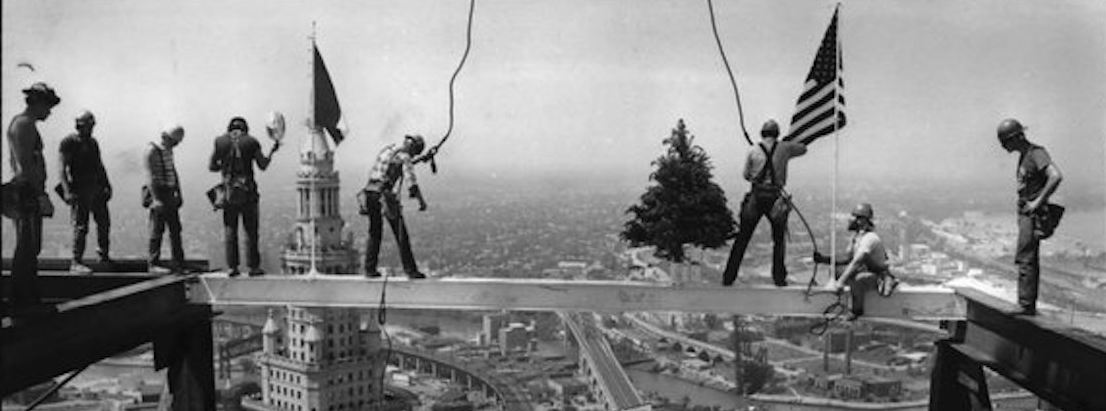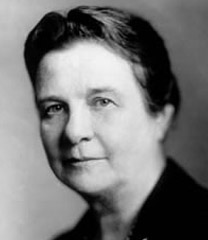from “My Story”, Tom L. Johnson’s autobiography 1912
From CSU Special Collections
If above does not work, try this
Mr. Cooley, who had been at the head of the city’s charitable and correctional institutions from the very beginning of my administration, continued in this department, the duties of the new public service board being divided upon lines which assigned to him this field for which he was so admirably adapted. If service of a higher order on humanitarian lines had ever been rendered to any municipality than that rendered by Mr. Cooley to Cleveland, I have yet to hear of it. His convictions as to the causes of poverty and crrime coincided with my own. Believing as we did that society was responsible for poverty and that poverty was the cause of much of the crime in the world, we had no enthusiasm for punishing individuals. We were agreed that the root of the evil must be destroyed, and that in the meantime delinquent men, women and children were to be cared for by the society which had wrong them – not as object of charity, but as fellow-beings who had been deprived of the opportunity to get on in the world. With this broad basis on which to build, the structure of this department of Cleveland’s city government has attracted the attention of the whole civilized world. How small the work of philanthropists with their gifts of dollars appears, compared to the work of this man who gave men hope – a man who while doing charitable things never lost sight of the fact that justice and not charity would have to solve the problems with which he was coping.
In the very beginning Mr. Cooley came to me and said, “The immediate problem that is facing me is these men in the workhouse, some three hundred of them. I’ve been preaching the Golden Rule for many years; now I’m literally challenged to put it into practice. I know very well that we shall be misunderstood, criticized and probably severely opposed if we do to these prisoners as we would be done by.”
“Well, if it’s right, go ahead and do it anyhow,” I answered, and that was the beginning of a parole system that pardoned eleven hundred and sixty men and women in the first two years of our administration. To show what an innovation this was it is well to state that in the same length of time the previous administration had pardoned eighty-four. The correctness of the principle on which the parole system is based and the good results of its practice are now so generally accepted that it could not again encounter the opposition it met when Mr. Cooley instituted it in Cleveland. The newspapers and the churches – those two might makers of public opinion – were against it, yet it was successful from the very start.
In his first annual report Mr. Cooley recommended that a farm colony be established in the country within ten or twelve miles of the city, where all the city’s charges, the old, the sick, the young and the delinquent might be cared for. To quote his own words:
“Underneath this movement back to the land are simple fundamental principles. The first is that normal environment has a strong tendency to restore men to normal mental and physical condition. The second is that the land furnishes the largest opportunities for the aged and the defective to use whatever power and the talents they possess. In shop and factory the man who cannot do his full work is crowded out. Upon the land the men past their prime, the crippled, the weak can always find some useful work.”
Before the end of his nine years’ service Mr. Cooley’s hope was in part at least realized. From time to time the city purchased land upon his recommendation until twenty-five farms – nearly two thousand acres in all – had been acquired. The city council voted to name this great acreage the Cooley Farms, and so it is known. It is divided in the Colony Farm, which has taken the place of the old infirmary or city almshouse, the Overlook Farm for tuberculosis patients, the Correction Farm for workhouse prisoners, the Highland Park Farm, the municipal cemetery. Then there is the farm of two hundred and eight-five acres at Hudson, twenty-three miles from the city, which is the Boys’ Home. This farm was the first of the city’s purchases and the land was bought at less than forty-four dollars an acre. Here in eight cottages, each in charge of a master and matron, the boys from the juvenile court find a temporary home. There is no discipline suggesting a reformatory. There are schools with some manual training in addition to the regular school curriculum, and the care of the stock and other farm work to occupy the boys. The principle is the same as that of the George Junior Republic, but adapted to municipal needs. The boys respond wonderfully to the normal environment provided here. The juvenile court, though a state institution, always had the hearty support of the city administration and the court and the Boys’ Home have cooperated most successfully.
The city’s purchase of the first eight hundred and fifty acres of the Cooley Farms, on which the whole magnificent project hinged, was almost prevented by special privilege. Everything the administration attempted had come to be the object of its attack and at the time we no longer had a majority in the council. One Monday afternoon Mr. Cooley took one of our friendly councilmen out to the farm to show it to him. As something of the greatness of the proposed work dawned upon the man he grew enthusiastic and expressed himself most feelingly in favor of it. That night at the council meeting, when the purchase of the land was under consideration, this man got up and denounced the whole plan in a speech so bitterly sarcastic that it was with extreme difficulty that we saved the day. His speech all but defeated the appropriation. Mr. Cooley was so surprised that he could hardly credit the evidence of his own senses. It was perfectly clear that the councilman had “been seen,” between the time he had visited the farm site with Mr. Cooley in the afternoon and the hour of the council meeting at night. Mr. Cooley felt, as I did, that the enemy might at least have spared this project. The appropriation was made, the farm was purchased, but the incident had sad consequences.
The councilman – a young fellow – had undoubtedly gone into his office with the thought of doing good work and making it a stepping-stone to bigger and better service. When he talked with Mr. Cooley in the afternoon it was himself, the real man in him, that spoke. He believed in Mr. Cooley’s work. What happened between that time and the hour of the council meeting we do not know, but that man was never quite the same afterwards. Somehow he had been undone. He has since died. He wasn’t bad, but Privilege came along and laid hands upon him and spoiled his chance. Its path is strewn with tragedies like this.
All of the departments under Mr. Cooley were placed on a new basis, each as radical and as rational as the parole system or the method of conducting the Boys’ Home. Over the entrance to the Old Couples’ Cottage is inscribed, “To lose money is better than to lose love,” and the old men and women, instead of being separated as formerly and simply herded until death takes them away, live together now, and useful employment is provided for all who are able to work, for idleness is the great destroyer of happiness. Especial care has been taken to better the surroundings of the crippled and the sick. The buildings on Colony Farm are of marble dust plaster finish with red tile roofs and the Spanish mission style of architecture. Beautifully located on a ridge six hundred feet above the city, they look out onto Lake Erie ten miles away. A complete picture of the buildings, even to the olive trees which are one day to grow in the court and the fountain which is to splash in the center, to the canary birds singing in gilt cages in the windows of the cottages, to the old ladies sitting at their spinning wheels in the sun and to the old men cobbling shoes or working in wood in the shops, existed in Mr. Cooley’s mind when the city bought the first of the land and long before a spadeful of earth had been turned in exacavating.
The tuberculosis sanitarium is half a mile from the colony group, protected by a forest of seventy acres on the north and northwest and looking out over open country on the other sides. Here is waged an unequal contest with a disease which science can never eliminate until the social and industrial conditions which are responsible for it are changed. A mile and a half from the Colony Farm is the Correction Farm for the workhouse prisoners. The men come and go as they like from their work on the farm, at excavating for new buildings or quarrying stone. Refractory prisoners, instead of being dealt with by the old brutalizing methods, are bathed and given clean clothes and then sent off by themselves to reflect – not to solitary confinement in dark cells but to one of the “sun dungeons” originated by Mr. Cooley. These rooms – three of them – in one of the towers of the building are painted white, and flooded with light, sunshine and fresh air. It is part of Mr. Cooley’s theory that men need just such surroundings to put them in a normal state of mind when they are feeling ill used or ugly. – “Sending them to the Thinking Tower,” he calls it. – A volume would be inadequate to give even a partial conception of this branch of our administration’s activities.
All of the land in the city farms has increased greatly in value since it was purchased. Purely as a business venture it has been a good investment. Its value as a social investment cannot be estimated.



